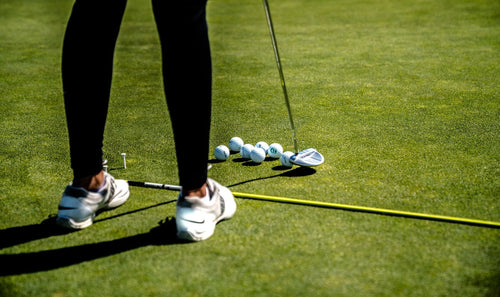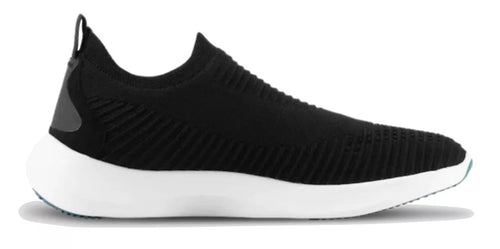It’s that time of the year again, the time when both fitness resolutions and shoe sales are on the rise. But with so many websites selling their selection of the best waterproof sneakers or the top-rated trainers, an interesting question forms in your mind.
What’s the difference between sneakers and trainers? Are they the same thing? Does it matter?
Luckily, you’ve come to the right place for answers!
So, close your shopping cart for now and give this post a read before making any decisions.
The History and Etymology Behind Athletic Footwear
The evolution of athletic footwear into what we now know as sneakers and trainers is fascinating. Believe it or not, there’s a lot of history, culture, and politics attached to this modern footwear.
The use of athletic footwear came about in the early 1800s. “Plimsolls” were highly popularized in Britain, being among the first of their type with a canvas top and rubber soles. These two features are hallmarks of modern sneakers and trainers.
The rubber soles and comfortable material were popular among sportsmen, especially tennis and croquet players. From this point onwards, it was all about increasing comfort and grip.
Towards the end of the 1800s came an evolved version of Plimsolls, designed specifically for running. British company J W Foster and Sons designed shoes with optimized traction. Additionally, their weight was significantly lower than that of Plimsolls.
At the same time, across the oceans, these rubber-soled shoes were becoming increasingly popular in America. Here, however, they were called “sneakers.” Referring to the rubber soles and light weight, the term denoted how the wearer could easily sneak around with making a single sound.
Still, the shoes were only being worn by athletes and later by army men during the war period. It was only during the post-war period that sneakers became popular among regular citizens. This was because opportunities for leisure grew, and more and more people got into fitness culture.
For example, jogging became popular in the 1970s as the best way to stay in shape. As a result, the sale of running shoes skyrocketed.
During the same decade in America, sneakers were a huge part of certain subcultures such as hip hop and rock ‘n’ roll. As a result, sneakers were being worn casually as a fashion statement.

Now, sneakers were being worn by sportsmen, basketball players, models, and regular people.
American Vs. British English?
We saw how the term “sneakers” gained popularity in America. In Britain, the word didn’t quite catch on.
Instead, Plimsolls evolved into what they now call trainers. Just like Plimsolls, trainers had flat rubber soles meant to provide stability and traction. Unlike Plimsolls, trainers were made of lighter cloth material to offer easier, flexible movements.
So, does that solve the case? Are trainers and sneakers variants of each other in American and British English?
Well, not exactly.
While it’s true that the term “sneakers” is mostly used in America, and the term “trainers” is used in Britain, that’s not where the difference ends.
In fact, trainers and sneakers have completely different functionalities and features. Let’s take a look at some of the major differences.
Main Differences Between Sneakers and Trainers
You might not be able to tell at first, but there are some very big differences between sneakers and trainers. From their purpose to their design, sneakers and trainers are strikingly different from each other.

Activities
The most salient difference between sneakers and trainers is in the activities for which they are used.
Generally speaking, sneakers are used as running shoes. This means that they are designed to provide forward movement.
On the other hand, trainers are used for versatile training such as plyometric training, gymming, weight lifting, and aerobics training. Structurally, trainers focus on providing lateral support.

Keep in mind that running is also a very versatile activity. Brands soon recognized this and started focusing on providing solutions to runners’ problems. This has led to some of the best waterproof sneakers and lightweight shoes being available in the market.
By contrast, trainers don’t require features such as water-resistance and lightweightedness. Instead, they focus on providing stability and flexibility for CrossFitters and weight lifters.
Structure
The biggest visual giveaway for differentiating between sneakers and trainers is their overall structure.
First, you must understand that trainers are meant to provide lateral support for dynamic, multidirectional movements. For this reason, trainers visually flatter and sturdier than sneakers.
Second, trainers must also provide stability for dynamic and weighted movements. That’s why trainers are also wider than their running counterparts.
On the other hand, running sneakers typically have a lot of cushioning to absorb the impact of your feet hitting the ground. Generally, if a shoe has a lot of height, especially in the heels area, it’s because they have extra padding for running.
At this point, a visual reference might help. Check out Loom’s waterproof running sneakers to understand how running shoes are structurally unique. Loom uses an extensive cushioning system that consists of an excelcast sole and merino wool-lined insole. This way, there’s no excessive padding so the shoe can remain lightweight and comfortable.
Elevate Your Run! Try Loom's High-Performance Sneakers for Unmatched Comfort and Durability.
Material
When it comes to materials, brands are getting more and more creative with the kind of fabric they use for their shoes. These days, it’s all about lightweight, breathable, and waterproof shoes for men and women alike.
Still, you’ll find that running shoes are mostly made from a porous, mesh fabric. On the other hand, trainers are generally made from thicker synthetic materials.
Cushioning
Ample cushioning is a huge selling point for sneakers. Cushioning refers to the capacity of a shoe to absorb the force of impact when runners land on the ground. Without good cushioning, runners risk serious injuries.
That is not to say that trainers don’t have any cushioning at all.
Activities such as plyometrics, CrossFit, and jumping rope are very impact-heavy. So, trainers will also need to have a good amount of cushioning to maximize performance.
When it comes down to it, however, sneakers have much more cushioning than trainers.
Weight
Generally speaking, trainers are heavier than sneakers.
The type of material used is one of the biggest factors that determines weight. As we saw earlier, sneakers are made from lighter fabrics, while trainers are made of heavier synthetic material.
Additionally, trainers carry a lot of weight in their soles because of how wide they are.
On the other hand, lightweightedness is a requirement for sneakers so that the runner doesn’t tire out or injure themselves. This is why the best waterproof sneakers out there will be as lightweight as they are resistant.
Heel-Toe Drop
In case you don’t already know, heel-toe drop refers to the difference in height between the heel and forefoot.
Most sneakers have a heel-toe drop between 6mm and 12mm. What this means is that the height of the heel is significantly larger than that of the forefront. But why is that so?
The thing is, running is all about transferring energy from the back of the foot to the front. Your heels endure most of the landing impact and then transfer that energy to the balls of your feet as you launch forwards again.
For this reason, running shoes require a lot of cushioning in the heel.
Contrastingly, trainers are flat, with a negligible heel-toe drop. This is because activities such as weight-lifting and plyometrics don’t have a heel-to-toe movement.
If anything, they require more side-to-side and multidirectional motions. For this reason, there is equal cushioning throughout the shoe, making them wider and flatter.
|
|
Sneakers |
Trainers |
|
Activities |
Running, jogging |
Gymming, aerobics, CrossFit, jump rope, plyometrics |
|
Structure |
Tall and narrow |
Flat and wide |
|
Support |
Frontal support |
Lateral Support |
|
Material |
Lightweight and breathable mesh |
Thicker synthetic |
|
Cushioning |
More cushioning |
Less cushioning compared to sneakers. |
|
Weight |
Lightweight |
Heavier than sneakers because of material and structure |
|
Heel-toe drop |
Between 6mm to 12mm |
Almost no heel-toe drop |
Are Sneakers and Trainers Interchangeable?
Alright, you get it. Sneakers and trainers have vastly different features. But do you really need to care so much about the technicalities? Can’t you just use your one pair of shoes for everything?
We’ve discussed the effects of wearing the wrong shoes in detail in another post. But allow us to reiterate.
If you’re a frequent runner, you need something with ample cushioning- no ifs, ands, or buts.
Trainers don’t provide the level of cushioning that you need for running. In fact, if you wear trainers for running, you’ll end up with some pretty serious injuries.
Conversely, sneakers don’t provide the amount of flexibility and support that trainers do.
If you try to perform challenging dynamic movements wearing sneakers, you’ll lose your balance pretty quickly.
Even the best waterproof sneakers out there claiming all-in-one functionalities can’t give you optimal performance in every single physical activity.
Should You Get Sneakers or Trainers?
If you’re still confused about whether you should get trainers or sneakers, ask yourself this: what is your main goal?

Are you a runner who also likes to hit the gym once in a while? Invest everything in the best waterproof sneakers available in the market.
Instead, are you into more dynamic training to build your overall strength and flexibility? Then try to go for high-performance trainers to help you achieve your goals.
Conclusion
For most people, sneakers and trainers are basically the same things. In everyday vernacular, both words refer to athletic footwear. Whichever word you use, you get the idea across.
But when it comes down to it, knowing the difference between trainers and sneakers can save you a lot of hassle and money.
So, the next time you’re shopping for the best waterproof sneakers or best gym trainers, pause and ask yourself this: what are you really looking for?
"Hit the Ground Running with Loom Sneakers – Experience the Perfect Blend of Speed and Comfort. Grab Yours Now!"



























